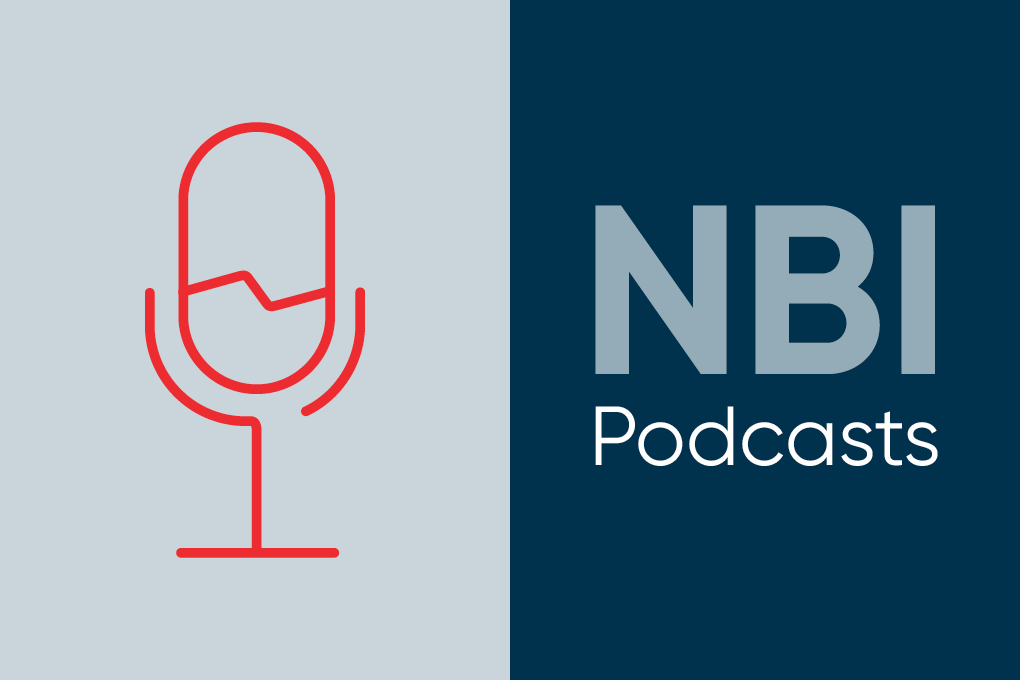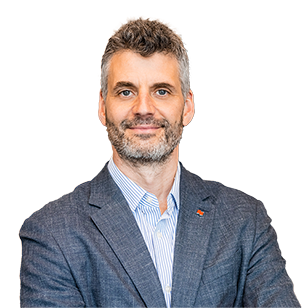Martin Lefebvre
Hi everyone. Welcome and thank you for tuning into this NBI Podcast. I'm your host, Martin Lefebvre, Chief Investment Officer at National Bank Investments. Today's discussion will be around the rise of active ETFs, a timely topic of high importance as NBI launches 20 new ETFs in September.
To do so, I'm joined by Tiffany Zhang, Director within the ETFs and Financial Products Research Group at National Bank Capital Markets. Tiffany, welcome. Thank you so much for having me. Tiffany, I'm told you're celebrating 10 years at the Bank. Congratulations.
Tiffany Zhang
Thank you. That's very kind of you. I can't believe it's been 10 years.
Martin Lefebvre
Time flies. So, before we dive in the main subjects, can you tell us about the importance of your role in the evolution of the ETFs research team over the past decade?
Tiffany Zhang
Absolutely. I am really passionate for what we do here at the ETF research desk. I joined a group on August 31, 2015, exactly 10 years ago, and very fortunate to land on the team and started out as an associate analyst right after completing my Master of Finance program. And over time I've taken on more senior roles and my team has expanded from three to now five people.
Honestly, it's really humbling to work alongside such great colleagues on the team and also across the Bank. And as you said, Martin, the ETF industry has evolved dramatically over the past decade and we've been just constantly really busy answering client questions and putting out reports that keep our readers up to date regarding what's happening in the ETF industry landscape. And every day we need to learn a lot of new knowledge to stay ahead of new products that are becoming increasingly sophisticated. And that’s, I think, a really fun part of my role. And it's busy, of course, but looking back, I think I feel very fulfilled knowing that through our team's effort, we have helped so many clients along the way.
Martin Lefebvre
Tiffany, you mentioned the growth of the ETF space in Canada and throughout the world. Let's focus specifically on the actively managed ETFs in the country. Can you tell us what factors have contributed to the explosive growth in the recent years and maybe what is driving this surge in popularity?
Tiffany Zhang
For sure. We do track the growth of ETFs, including active ETFs, very closely. We've had active ETFs in Canada for at least 20 years now. It's not a new development, but certainly in the past three to five years, the growth rate of active ETFs has accelerated to the point now in Canada, when we look at the number of products, more than 50% of the products are actively managed or rules based. They do not track any published indices. And that's also the case in the U.S. And I think both the supply and demand side has to do with the growth of the active ETFs. What I mean by that is on the demand side, when I first started, most of the investors were using ETFs in a passive way. ETF was almost synonymous with passive investments. Investors use them to get passive exposure into Canadian equity, U.S. equity and global equity. And they also use passive fixed income ETFs to get exposure to mostly Canadian bonds. But over time, the investor demand has shifted beyond simply getting plain vanilla passive exposure.
There's also the demand to get global diversification and high and tax-efficient ongoing high distributions and also portfolio insurance and protection during drawdowns, as well as some niche asset classes and themes. All of these demands are better met with active ETFs that are more flexible. And on the supply side, we have a very competitive marketplace. We have 44 ETF issuers in Canada right now, soon to be 46. Sun Life and Capstone have filed preliminary perspectives to launch ETFs in Canada. By the end of the year, we'll likely have at least 46 ETF issuers in Canada. And in the U.S., they call it a “terrordome.” In Canada, I wouldn't say such an environment yet. However, it is very competitive. In order to differentiate, simply launching another “me-too” S&P 500 ETF wouldn't help too much in raising assets. What we see the ETF issuers do is that they launch ETF series of mutual funds or standalone ETFs that replicate their existing mutual fund strategies that can lean into their star portfolio managers or successful strategies that already have a really wide following or popularity and track record on the street so that the products can be differentiated.
I think the need of the ETF issuers to stand out and also the demand of ETF investors becoming more sophisticated. That creates a perfect environment for the fast adoption of active ETFs.
Martin Lefebvre
You mentioned that the demand for ETFs went from passive to active, and you mentioned that for the time being, most of those are transferred from actively managed mutual funds to ETFs. What are other current trends in active ETFs. What are you seeing? What's popular right now?
Tiffany Zhang
There are several different trends emerging. I can talk about one for now and we can delve into the other ones. The one that I'm seeing right now is the boundary between active and passive is becoming increasingly blurry. I know we are talking about active, Martin, and this entire episode is about active, but I think the distinction between active and passive really isn't the “be all” when it comes to product selection in ETFs. Here's what I mean. For active ETFs, now they are increasingly using passive ETFs as underlyings.
Two examples are in Canada, two of the largest active ETF categories are asset allocation ETFs and the option strategy ETFs. They make up more than 40% of the active ETF landscape. For these ETFs, the underlying portfolios are oftentimes index-tracking passive ETFs. And for the asset allocation ETFs, the portfolio manager would have active discretion over when to rebalance, what products to use, and how to do the rebalancing. And for the option-based ETFs, the portfolio manager would actively manage the option writing program to offer that high and tax-efficient distribution for clients. The active now is becoming more passive. And on the passive side, they say indexing is a series of active decisions. There's always been an element of active even in the indexing business, but I think it's getting more active-like because indexing is becoming more complicated. I think the index right now; they have to rely more on the human judgment and the expertise of humans to really define the investment universe and then set the criteria for what we include in the portfolio and even the ongoing maintenance. I'll give you an example. We have several index-tracking artificial intelligence ETFs in Canada and in the U.S. But when we lift the hood and look at their underlyings, they look vastly different. They don't look like ETFs that fall under the same category at all. The reason is in the index design phase, the analysts at different index shops, have different criteria or a different definition of what AI is and what criteria and what methods to use to screen for AI companies. They have to monitor the index in an ongoing basis so that their index construction rulebook stays current and relevant. If not, they have to make modifications. That really sounds very active to me. All of these nuances mean that when clients come to us, we typically don't start from the active versus passive distinction, but rather, we look at what exposure is that the client is looking for, and then we map that into the desired ETFs, and then we take additional steps in analyzing the ETFs, and then we present a menu of options to the clients.
Martin Lefebvre
You mentioned exposure and perhaps diversification. You also mentioned option strategies. Are you seeing more alternative asset classes like maybe private credit or real assets entering the ETF space? Is that something that's more and more popular?
Tiffany Zhang
It is actually. We have few ETFs in Canada and the U.S. that are already including some of these more alternative, illiquid types of investments in their portfolio already. Of course, they have to abide by the illiquidity rule, meaning that they need to limit those illiquid investments to a maximum of 10% to 15% of the portfolio. But these kinds of products are coming to the market. And I wouldn't be surprised if we have more and more of these kinds of products. I've read articles of how in the U.S., the number of public stocks has declined from the peak of 8,000 in the 1990s to now more than 4,000. That's because of the growth of private equity. That also fills the demand for private credit, which I think the market has grown tremendously to close to $2 trillion globally in assets under management. If our collective marketplace becomes more private, these kinds of investments will find their way into ETFs. It's not without challenges, though. I think transparency and liquidity are the biggest challenges for these kinds of ETFs. Until an ETF can find lots of natural buyers and sellers on the secondary market, their bid-ask spread is determined largely by the underlying liquidity. The more illiquid the underlyings are, the bigger the bid-ask spread for ETFs. I think the availability of these ETFs will be constrained by whether market makers can find liquid proxies for, say, a toll road or airport or some private loans. But we do see ETFs in the U.S. that include private equity in there. One ETF, XOVR, included SpaceX in their portfolio and since then have attracted a couple hundred million dollars of inflows and another ETF from State Street has included private credit in the portfolio also got some interest. Certainly, the ETF providers are attempting to offer innovation in this area, but given all the constraints, I think it’s likely going to be a small component in the ETF landscape.
Martin Lefebvre
Tiffany, let's go back to a portfolio construction and talk a little bit more about diversification. What type of role do you see actively managed ETFs play in portfolio diversification?
Tiffany Zhang
That's a very good question. We do see that both active and passive ETFs offer diversification benefit to the portfolio, but even more so with active ETFs because they’re able to access broader opportunities set. What we see this year is that investors are increasingly allocating to international equity and fixed income via active and passive ETFs. I know Martin, at the CIO Office, your team has been recommending increasing allocation to EAFE for a while now and is really the best performing equity compared to any other regions globally. I think what's happening in the ETF space is that ETF investors have been overly concentrated in U.S. equity for the past decade or 15 years, which really has been the best performing asset class. But all of a sudden, this year, the U.S. dollar is depreciating, is dragging on returns and then also the U.S. exceptionalism is being challenged. We had the sell-off in April from the tariffs. All in a sudden, investors realized that they need to diversify outside of the U.S., and they ramp up their allocation into international via ETFs. And I think in the exposure to international bid equity or fixed income, ETF is really an important tool because without active ETF or active funds, we have to go down two routes. One is we have to be our own active portfolio manager. Two, we have to go entirely passive. Let's talk about both of these. The first one, we can be our own portfolio manager. For sure, I can manage my own maybe North American equity portfolio, but my portfolio will have really large home country bias and sector concentration and is really constrained by how I see the world. And I wouldn't really feel comfortable stepping outside of North America and say buy a Japanese stock or some French companies because I'm not familiar with some at all, let alone managing all the currency and the withholding tax implication of investing internationally. And then the second route is “go all passive.” We do see some clients using entirely passive ETF for international, but I think there's also some concerns and risk. We talk about the concentration of the U.S. equity benchmark, top 10 stocks in the S &P 500, making up 30% of the allocation. But when we look at international countries such as the UK, Germany, France, their top allocations in the top 10 stocks are even higher, even more concentrated than the U.S. And their sector is also more concentrated than the U.S. Some clients are really concerned about this, and they would rather have active management for international exposure. And for fixed income, it's predominantly active for managing different kinds of bond exposure and allocating to different countries depending on their yield curve and currency situation. And we can talk about fixed income as well, which I think is really a huge growth area in the active ETF landscape.
Having said that, I think active is really important, but the onus is really on the investors to do all the proper due diligence. And my team is here to answer all the client questions. If you are ever curious about any of the products, please come to us and we can help you with ETF product selection.
Martin Lefebvre
Tiffany, I think you've made the role of Active ETF pretty clear. You mentioned earlier there were about more than 40 suppliers right now. And as I said in the intro, National Bank Investments is about to launch 20 new actively managed ETFs. What do you think the landscape will look like in three to five years?
Tiffany Zhang
It's really difficult to predict. I wouldn't have predicted that we would have this many active ETFs in Canada and that we would have Bitcoin ETFs, split share, preferred- share ETFs, CLO ETFs. All of these amazing innovations, I wouldn't have seen that. But I think two trends are pretty clear. One is that there's going to be a trickle-down effect that's going to still happen in the ETF landscape. What I mean by that is that some of the strategies or ideas that are popular in the institutional space can trickle down into the retail space via ETFs and vice versa. One example I mentioned earlier is the CLO ETFs. Traditionally, this has been an institutional asset. But now we have six ETF issuers in Canada launching CLO ETFs. And many of the retail investors really like them due to their high distribution yield and their lower drawdowns during sell-offs. And the other direction also happens. Crypto asset ETFs traditionally are a retail asset. Most of the crypto ETFs or crypto investors are retail investors. But now many U.S. institutional investors, state pension funds and endowments and large family offices and different kinds of advisory firms have embraced U.S.-listed Bitcoin ETFs.
I think ETFs are all about democratizing access to investment ideas. Whatever is popular in one part of the finance world will likely be wrapped up in an ETF and get delivered to other market participants. Another trend that I think will likely happen is active ETFs may have wider adoption among different kinds of investors. So right now, most of the investors in active ETFs in Canada are retail clients, the online discount investors as well as the financial advisors. But I think we have seen institutional clients globally use active ETFs. One use case could be to access some of the niche asset classes and themes where the institutions do not have trading or research infrastructure for. And there could be other use cases such as alpha generation or cash management – all the cash ETFs in Canada are active, and by institutions, I mean some of the asset owners such as pension funds and insurance companies, as well as the asset managers who manage their funds using ETFs. I think as the liquidity profile of Canadian ETFs improve and their fees come down due to the increasing competition, I think they will also get traction from the institutional space. But overall, I think the growth rate of active ETFs and the ETFs overall will likely be here and you wouldn't slow down in the next three to five years.
Martin Lefebvre
By listening to you clearly, I think that the future is in ETFs and obviously, actively managed ETFs will play an important role in that. Tiffany, thank you very much for your time. It was a pleasure having you today and for everybody listening. Thank you for tuning into our NBI Podcast. We'll talk again next month.


 Martin Lefebvre
Martin Lefebvre

 Tiffany Zhang
Tiffany Zhang

